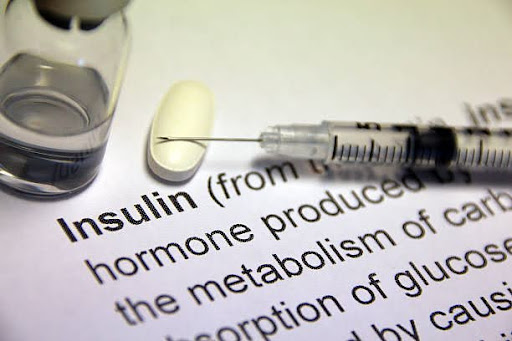
Diabetes Treatment Type 1: Effective Options for Long-Term Control
Successful Diabetes Treatment Type 1 diabetes requires taking care of yourself daily and organizing your health plan. An autoimmune problem, often found in children or teenagers, leads to the pancreas no longer producing insulin which is key for controlling blood sugar. While type 2 diabetes might sometimes respond to dietary changes and exercise, people with type 1 diabetes must take insulin and stick to an all-around treatment plan to keep glucose levels healthy.
We discuss the best methods for controlling type 1 diabetes in the long run, including recent advances and common treatments. We also address helpful daily lifestyle changes.
What Distinguishes Diabetes Treatment Type 1 and What Is It?
Diabetes Treatment Type 1 is the result of immune cells attacking the insulin-producing beta cells in the pancreas. So, people with this disease completely lack insulin in their bodies. As a result, type 1 diabetes is distinct from type 2 diabetes, where resistance to insulin is the chief cause of the disease.
Sudden type 1 diabetes always needs to be treated right away as it can be dangerous. Insulin treatment should start soon after a person is diagnosed and throughout that time, they need to carefully watch their glucose levels to avoid unpleasant changes that can cause issues.
Insulin is the basic medicine used in treatment.

Different forms of insulin are used to help control blood sugar in the same way as the body’s own insulin. Basal insulin maintains blood sugar in between the main meals and overnight and bolus insulin handles the rise in blood sugar after meals. Most people being treated follow a plan that uses both approaches.
Over the years, methods for sending insulin have gotten better. Although many people keep using syringes and insulin pens, insulin pumps have gained popularity. The devices deliver insulin continuously into the body using a catheter, giving better flexibility and tighter glucose management. Now, smart insulin pens and automated insulin delivery devices are playing a major role in treating type 1 diabetes.
CGM helps you see glucose trends in real-time.
Keeping an eye on blood glucose helps avoid hyperglycemia and hypoglycemia. While fingerstick tests help, they can only provide information for one moment. CGM devices can see glucose levels frequently all throughout the day and night compared to other types of testing.
A CGM system includes a tiny sensor inserted just under the skin that detects the glucose level in the fluid found between cells. They can alert you when your blood sugar is too high or too low and explain how what you eat, exercise and receive insulin influences your blood sugar. With an insulin pump and a CGM, it’s possible to set up a hybrid closed-loop system which some describe as an artificial pancreas.
The integration helps Diabetes Treatment Type 1 become safer and more effective for children and teenagers who find it hard to keep up with manual dosing.
The Importance of What We Eat
Although insulin is important for glucose regulation, our diet mostly determines how our glucose levels vary each day. For those with Diabetes Treatment Type 1, it is very important to keep track of carbs, as they affect blood sugar levels the quickest.
With carbohydrate counting, individuals figure out how much insulin is required by looking at their meal’s carbohydrate content. A certified dietitian can give you meal suggestions including plenty of fiber, low-GI carbohydrates, lean protein and healthy fats. They help you control your blood sugar and keep your energy stable.
Try to keep meals at the same times to prevent sudden changes in your blood sugar. Taking care of your nutrition and regularly checking your blood sugar are important steps for managing diabetes for a long time.
The Effects of Physical Activity on Blood Glucose
Regular exercise is a helpful addition to dealing with type 1 diabetes. Being active physically can improve how the body uses insulin. Still, those with type 1 diabetes must be careful when exercising since it may change their blood glucose levels in unpredictable ways.
Before exercising, it’s necessary to test your blood sugar. The degree and how long a person is moving can change how much insulin is needed, so snacks could be important to ensure sugars don’t fall too low. After exercise, it is important to keep an eye on blood sugar, since low blood sugar may happen hours after you work out.
Proper exercise regularly helps your heart, raises your mood and has positive effects on wellness. Because of all this, effective Diabetes Treatment Type 1 plans make exercise a key element.
Emotional and Psychological Helps in Diabetes Care
Managing life with type 1 diabetes may be hard on your emotions. People with diabetes are often exhausted, anxious or depressed because there is always a need to watch their sugar, take insulin and make daily decisions about their health. That is why nowadays, people with diabetes are encouraged to get mental health care as well.
People facing a chronic illness can benefit by consulting counselors, taking part in support groups and seeing specialists trained in mental health. Talking openly with care teams can give patients a better feeling of control and reduces their loneliness.
Young patients get positive results from learning coping skills right away. Long-term diabetes care is possible with managing stress, organizing your time and working on problem-solving.
Progress in Research with Potential New Treatments
Research is helping to improve the way type 1 diabetes is treated. Treatments including immunotherapy are designed to limit the body’s reactivity against itself. Even though the treatments are being tested in clinical trials, they may lead to new medicines for treating the disease.
Transplants of beta cells and the use of stem cells are showing potential. The purpose of these approaches is to help the body make insulin again by adding new insulin-producing cells. Even though problems like immune rejection currently hold them back, they could have a significant effect on how people with Diabetes Treatment Type 1 are treated in the future.
The systems for artificial pancreases now use algorithms, CGMs and insulin pumps to help control blood sugar without the person needing to do much.
Helping Patients Learn More about Their Health
Learning about the disease is a key part of handling Diabetes Treatment Type 1 well. Once someone understands their condition, works with their meter and reacts correctly to fluctuations in glucose, they are often able to enjoy the best results.
DSME provides information to patients on topics such as taking their diabetes medications, counting carbohydrates, reacting to emergencies and caring for devices. These programs allow individuals to manage their problem instead of being controlled by it.
It’s also essential to keep learning new things. Following updates helps patients take advantage of the most current treatments for Type 1 diabetes.
Conclusion: Long-Term Control Is Within Reach
Although a cure still does not exist, those living with Diabetes Treatment Type 1 now have many options and strategies to support a full, active and healthy way of life. Long-term diabetes control options now consist of insulin therapy, CGMs, good nutrition, fitness, therapy for the mind and the latest research.
If people with type 1 diabetes use both medical advice and good lifestyle habits, they can successfully manage their diabetes. Succeeding depends chiefly on making health matters a habit, being educated about them and taking charge of your well-being.








